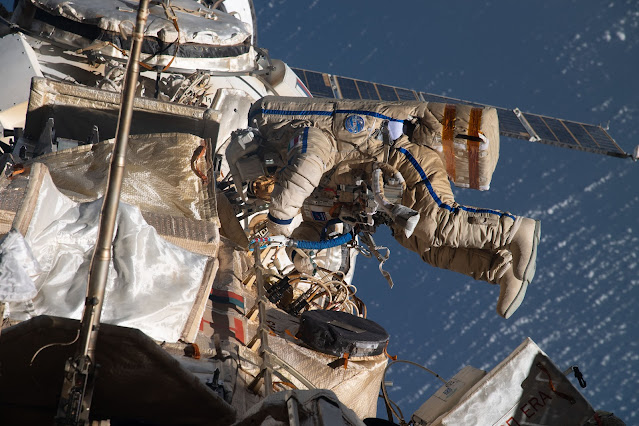NASA's Juno Mission Spies Vortices Near Jupiter's North Pole | JPL
As NASA's Juno mission completed its 43rd close flyby of Jupiter on July 5, 2022, its JunoCam instrument captured this striking view of vortices—hurricane-like spiral wind patterns—near the planet's north pole. These powerful storms can be over 30 miles (50 kilometers) in height and hundreds of miles across. Figuring out how they form is key to understanding Jupiter's atmosphere, as well as the fluid dynamics and cloud chemistry that create the planet's other atmospheric features. Scientists are particularly interested in the vortices' varying shapes, sizes, and colors. For example, cyclones, which spin counter-clockwise in the northern hemisphere and clockwise in the southern, and anti-cyclones, which rotate clockwise in the northern hemisphere and counter-clockwise in the southern hemisphere, exhibit very different colors and shapes.
A NASA citizen science project, Jovian Vortex Hunter, seeks help from volunteer members of the public to spot and help categorize vortices and other atmospheric phenomena visible in JunoCam photos of Jupiter. This process does not require specialized training or software, and can be done by anyone, anywhere, with a cellphone or laptop.
As of July 2022, 2,404 volunteers had made 376,725 classifications using the Jovian Vortex Hunter project web site at:
Another citizen scientist, Brian Swift, created this enhanced color and contrast view of vortices using raw JunoCam image data. At the time the raw image was taken, the Juno spacecraft was about 15,600 miles (25,100 kilometers) above Jupiter's cloud tops, at a latitude of about 84 degrees.
The Jet Propulsion Laboratory (JPL) manages the Juno mission for NASA. The mission's principal investigator is Scott Bolton of Southwest Research Institute in San Antonio. The mission is part of NASA's New Frontiers Program, managed at the agency's Marshall Space Flight Center in Huntsville, Alabama, for NASA's Science Mission Directorate. Lockheed Martin Space Systems in Denver built the spacecraft.
Learn more about the Juno mission, and get an up-to-date schedule of events, at: www.nasa.gov/juno and http://missionjuno.org
Image Credit: NASA/JPL-Caltech/Southwest Research Institute (SwRI)/Malin Space Science Systems (MSSS)
Image Processing: Brian Swift © CC
Release Date: July 26, 2022
#NASA #Astronomy #Space #Science #Jupiter #Planet #Atmosphere #Weather #Meteorology #Vortices #Juno #Spacecraft #Perijove43 #Exploration #SolarSystem #JPL #California #LockheedMartin #MSFC #SwRI #UnitedStates #CitizenScience #STEM #Education











